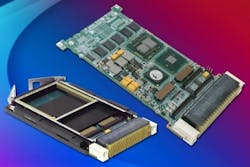Textron Defense Systems developing airbag-like net to protect armored vehicles from rocket-propelled grenades
The TRAPSNet countermeasure can defend against several different RPG hits, and does not substantially widen the vehicle, Textron officials say. The system only deploys when its sensors detect an incoming RPG, so it does not impede visibility for the vehicle driver and crew.
RPGs also are a demonstrated threat to military helicopters, as well as land vehicles, and Textron officials say they are considering how they might develop a version of TRAPSNet for helicopters. Critics, however, say a similar RPG protective system for helicopters might be too expensive and could adversely alter the aircraft's flight profile.
For more information contact Textron Defense Systems online at www.textrondefense.com, DARPA at www.darpa.mil, or the New Mexico Tech Energetic Materials Research and Testing Center at www.emrtc.nmt.edu.
Related stories
-- Navy seeks IR sensor-based technology to enhance helicopter defenses against ground fire; and
-- Warfighters call for innovative, responsive, and reliable vetronics in combat vehicles.
